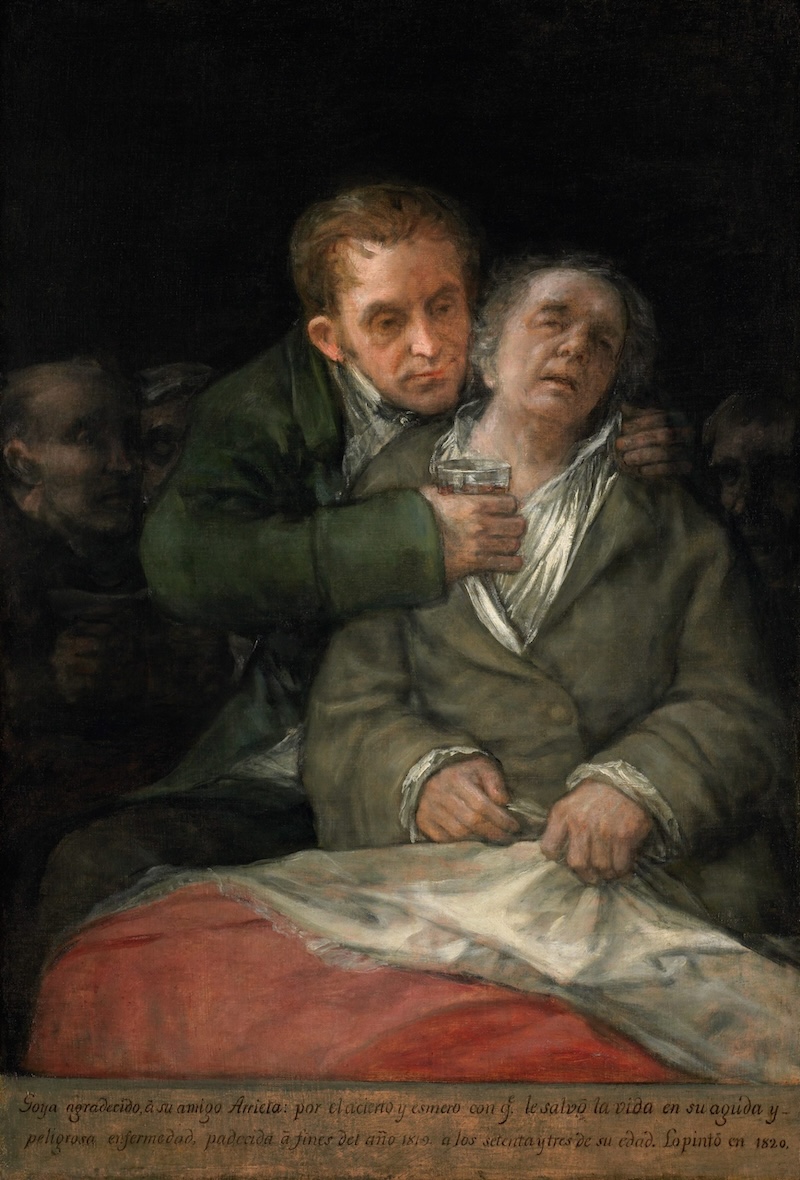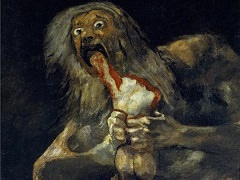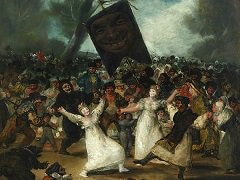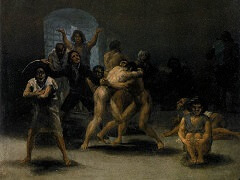Self-portrait with Dr Arrieta by Francisco Goya

Francisco Goya’s painting, Self Portrait with Dr Arrieta, is a masterpiece that captures the essence of the artist’s life and his relationship with his physician. The painting is currently held in the Minneapolis Institute of Art, Minnesota.
The painting depicts Goya, who was suffering from a serious illness, being attended to by his physician, Dr. Arrieta. The painting is a testament to the compassion and care that Dr. Arrieta provided to Goya during his illness. The painting is also a reflection of Goya’s gratitude towards Dr. Arrieta for saving his life during his acute and dangerous illness.
In the painting, Goya is depicted as weak, grasping his bed sheet as if clinging onto life. He is supported from behind by the arm of Dr. Arrieta, who gently encourages his patient to take medicine. Shadowy figures in the background seem to be faces of doom. The entire portrait is composed of contrasts. In the foreground, Dr. Arrieta and Goya are depicted naturalistically in a dim light, with the red bed-sheet at the bottom of the painting bringing warmth to the setting1.
Many scholars have seen religious themes in this work. Other interpretations compare and contrast the painting with Goya’s series of Black Paintings, contextualizing the work within his career at large. The painting has been described as an emblem of a shift in Spanish portraiture towards both the Modern Period and the secularization of portraits1. Further, the painting is also demonstrative of a shift within Goya’s portraiture, particularly in his depiction of himself before and after his encounters with illness.
Goya’s Self Portrait with Dr Arrieta is a testament to the power of art to capture the essence of human experience. The painting is a reflection of Goya’s gratitude towards his physician and a testament to the compassion and care that Dr. Arrieta provided to Goya during his illness.
















